Everything in the world is cyclical, and the high-tech industry is no exception. One of the themes that has not received its full development is modularity. This is a device where the main module is the base to which additional modules can be connected, adding certain functions or expanding existing capabilities.
There have been many attempts, starting with the Israeli startup Modu, which even went on sale, but did not become popular, and ending with the modular phone of the Ara project from Google, which got into the good corporation along with the purchase of a mobile unit Motorola, but so and did not see the light, like many of Google's ambitious projects.
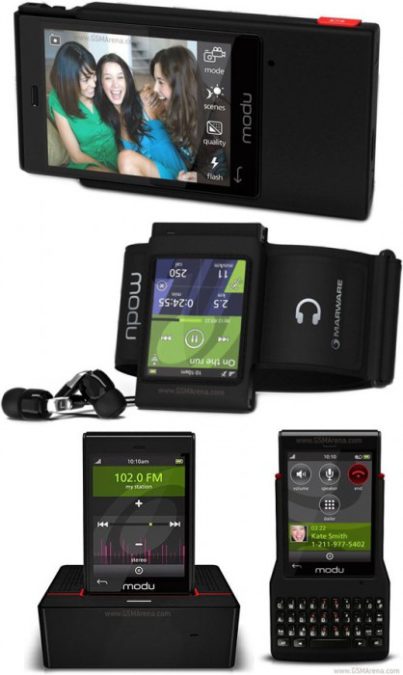
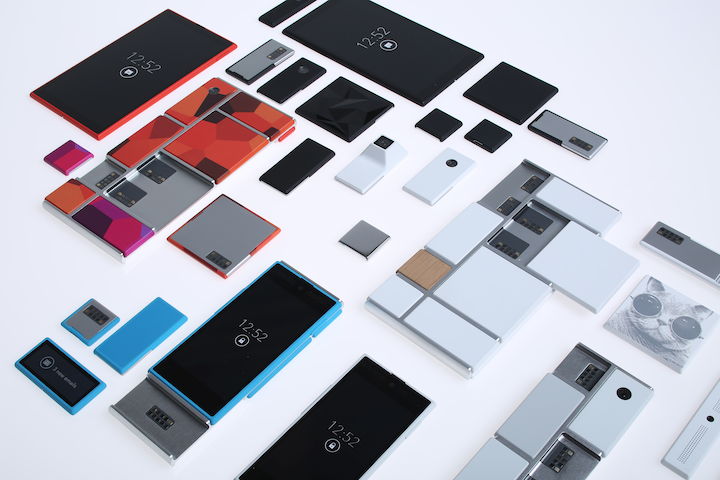
Yes, as a result, in Motorola they were able to bring to the market something similar in the form of replaceable modules for an already finished device, however, given the difficult position of the brand, it is impossible to call this solution massive and popular with all the desire.
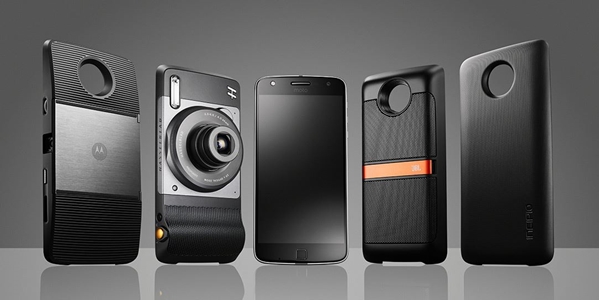
However, for some reason it so happened that when it comes to a modular gadget, by default it is believed that we are talking about a smartphone.
What if you extend this principle to other electronics? What if you extend the modular concept to seemingly established categories like headphones?
I was interested in this topic primarily due to my passion for portable sound and constant search for the perfect device that combines the maximum of technology and convenience.
What if we make modular headphones that, with the help of additional modules, will transform into different form factors?
Unlike smartphones, this trick is much easier to implement with headphones – fewer elements, fewer interfaced modules and much easier software that will control the modules.
And the impetus for the search for such a solution was a message from my colleague Ilya Subbotin, in which he shared his find with me on the website kikstarter.com
Ilya sent me a link to the project page for completely wireless headphones (TWS) MEZONE with an unusual charging case and said that he paid for participation in the program, which means that he will receive this model among the first after the start of sales and will definitely make a detailed review in which he will share his impressions from the device.


Ilya's message prompted me to search for unusual headphones on this portal of inventors and high-tech enthusiasts.
The result of the search was the AirLoop project page for the creation of the world's first modular headphones that combine three form factors at once:
- Fully wireless (True Wireless, or hereinafter referred to as TWS).
- Sports version with cable between headphones
- Flexible Collar Headphone Option


In addition to the unusual design, the headphones will be very technological, waterproof, work on version Bluetooth 5.0 and support the aptX codec.

Looking at these headphones, one wonders why no one has yet implemented such a scheme.
It is very hard to believe that such an idea did not occur to the engineers of large vendors. Then why? The answer suggests itself – if you release several devices of different form factors, you can sell several headsets at once, and not just one, which means you can get much more profit.
On the other hand, by launching a device of this kind, a large manufacturer with a strong position in the market could attract additional attention from potential and current buyers, which in the era of 'the same' electronics is in itself very valuable and in the future can be converted into additional revenue from sales of 'unusual' devices. The only problem is that later you will have to invent and produce these unusual devices, but here there may be problems with a crisis of ideas. A kind of trap.
But this is all speculation and theoretical reasoning. Be that as it may, the first device of this type is going to be released by the aforementioned small company of ambitious engineers from Cupertino (it looks like the air is special there), who had experience working with such serious brands as Harman, DJI and Anker.
Let's get back to the product.
Design and features
In the basic version of the AirLoop TWS headphones, the operating time is declared up to 80 hours (including the capacity of the charging case).
You will get classic, if I may say so, wireless headphones, 'plugs' with a battery life of about 10 hours, as well as a charging case in the form of a hexagonal prism with a built-in battery of an impressive 1400 mAh capacity – now it's clear where 80 hours of work came from.
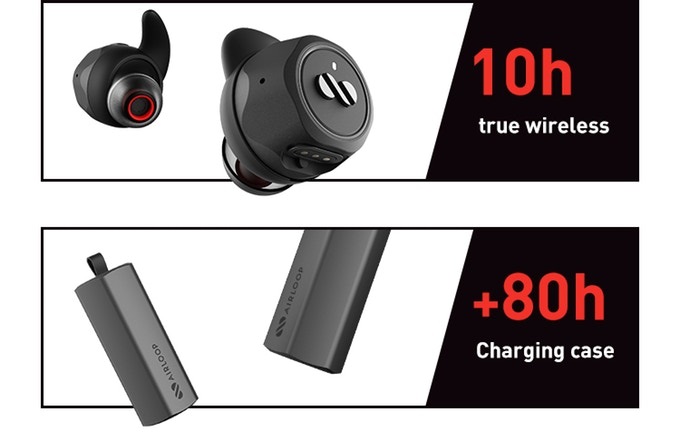
However, fully wireless headphones are not always convenient, and sometimes you need a little more autonomy and control, for example, when jogging or when doing active sports.
In this case, an additional module is provided, which is put on the headphones, turning them into a headset with a microphone and a wire that connects two headphones placed in a separate unit. This module has an additional 55 mAh battery, which, according to the manufacturer, should give an additional 3 hours of music playback time.

If this is not enough, then there is a third option – the headset turns into a neckband, to which headphones are attached, which ultimately gives an additional 12 hours of operation thanks to two 110 mAh batteries built into the arc.
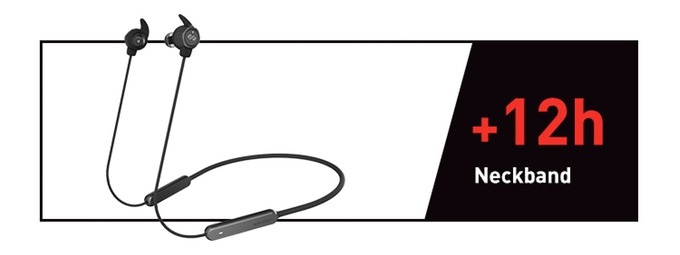
Noteworthy is the mechanism for attaching the modules to the headphones – at first glance, thanks to its design, it looks reliable, and even spectacular on animation. For a person who loves to disassemble and modify something, this is generally a delight.

At the moment, you can become an investor in the project by choosing from several options that differ in the delivery set and, accordingly, in price.
The main question, to which there is still no definite answer: if you choose the simplest option, will it be possible to purchase additional modules separately later, if such a need arises, or is it better to buy the complete set right away, so that later you will not be left without modules. Apparently, the answer to this question will appear after the launch of the product for public sale and assessment of demand and further prospects.
Conclusion
Whether this product turns out to be viable, only time will answer. At the moment, the required amount has already been collected, and there is still almost a month left before the end of the fundraising campaign, so the project will most likely be successfully implemented. Now the main thing is that the developers were able to implement all the declared functions and parameters of the device, since the history of such startups is replete with both complete failures and significant adjustments to the initial characteristics and functions towards simplification and deterioration in the final products.
Let's hope that the AirLoop team will succeed and the final product will be at least as good as the announced one.
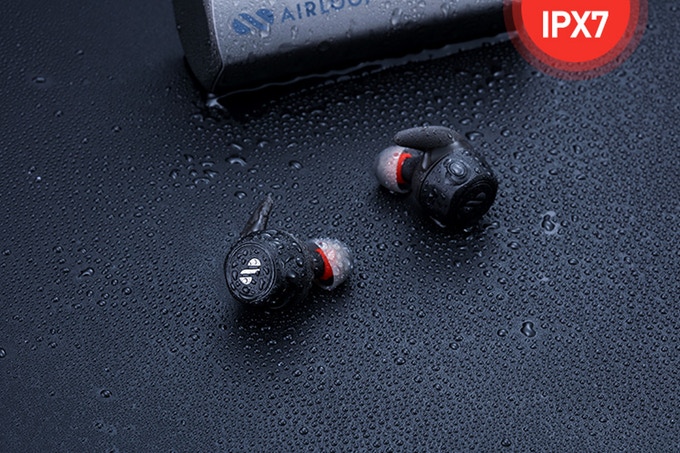
Then we can expect that other manufacturers, who are considered trendsetters in this area, will catch up, as happened with Elon Musk's bold start-up – Tesla, whose media success forced major automakers to unfreeze developments on the creation of vehicles on electric traction and turn on into the race for the production of electric vehicles.
What do you think, dear readers, does such a solution have a future and will it be possible for modular electronics to see the light in a new embodiment for themselves – in the form of portable acoustics?
I believe that this will happen, but for now I will wait for my paid set to be among the first to test a modular device that combines three types of wireless headsets at once.
